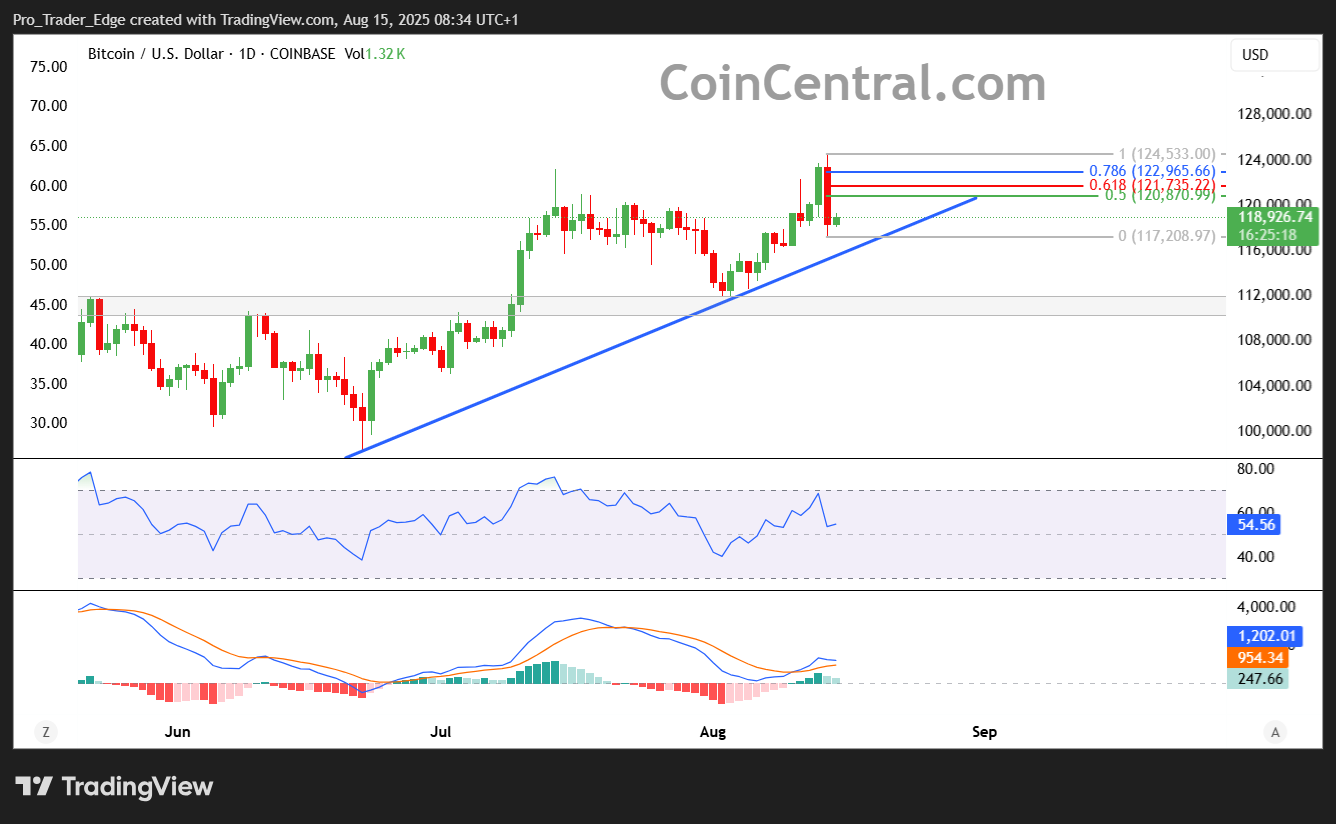TLDR
- Crypto market dropped $133 billion to $3.98 trillion market cap following unexpected inflation data
- Bitcoin fell from record highs above $124,000 to around $118,800, triggering over $1 billion in liquidations
- Analysts view the pullback as healthy profit-taking rather than a trend reversal
- Rising core inflation and stretched valuations pose near-term risks but institutional demand remains strong
- TeraWulf secured $3.7 billion AI data center deal while Coinbase completed Deribit acquisition
The cryptocurrency market experienced a sharp decline on Thursday after unexpected inflation data spooked investors and triggered the largest liquidation event since early August. The total crypto market cap fell by $133 billion to $3.98 trillion as traders took profits following bitcoin’s record-breaking rally.

Bitcoin dropped 2.3% from its all-time high of $124,474 to around $118,800. The decline came after the Producer Price Index inflation report came in higher than expected, dampening hopes for aggressive Federal Reserve rate cuts in September.

The selloff wasn’t limited to bitcoin. XRP fell 4.6% while ethereum performed relatively better with just a 0.7% decline. The CoinDesk 20 Index of largest cryptocurrencies dropped 2.1% over the 24-hour period.
The price action triggered massive liquidations across crypto derivatives markets. Over $1 billion in leveraged trading positions were liquidated in 24 hours, with most being long positions betting on rising prices according to CoinGlass data.

This represents the largest long liquidation since the market downturn in late July and early August when bitcoin briefly fell below $112,000. Many traders who opened high-leverage positions after the recent rally were caught off guard by the sudden reversal.
Analysts Say Pullback Is Healthy Correction
Market strategists emphasized that the decline represents normal profit-taking rather than a fundamental shift in market sentiment. David Siemer, co-founder and CEO of Wave Digital Assets, described the move as “simply a recalibration in an otherwise bullish trend.”
“After such a sharp rally, profit-taking tends to set in, and we saw short-term traders liquidate their positions and take gains,” Siemer explained. He noted that bitcoin “remains firmly entrenched as the anchor of institutional crypto strategies.”
Joel Kruger of LMAX Group shared a similar assessment, calling the pullback unsurprising after “impressive moves in crypto markets this week.” He maintained that “the outlook remains highly constructive and dips should be well supported.”
The recent bitcoin rally was driven by several factors including rising expectations for Fed rate cuts, surging ETF inflows, and increased institutional adoption. These underlying fundamentals haven’t changed despite the short-term price action.
Bitcoin is currently holding above the support level of $117,261. Technical analysts suggest that maintaining this level is crucial for preventing further declines toward $115,000. A recovery above $120,000 could signal renewed upward momentum.
Market Developments Continue Despite Volatility
While prices declined, several major developments occurred in the crypto space. TeraWulf announced a $3.7 billion deal with Fluidstack to develop an AI data center, with Google backing $1.8 billion for an 8% stake in the project.
The agreement provides 200 MW of IT load over ten years and could potentially expand to an $8.7 billion partnership. This represents continued institutional interest in crypto infrastructure despite market volatility.
Coinbase also completed its acquisition of derivatives exchange Deribit, which boosted the company’s stock price. The acquisition expands Coinbase’s offerings to include perpetual contracts and options trading, though these services are still in development.
Market analysts identified several risk factors that could impact crypto prices going forward. These include potential overextension of current valuations, geopolitical turbulence, and economic data that could change Federal Reserve policy projections.
The total crypto market cap is currently holding above $3.94 trillion, which analysts view as a potential support level for recovery. If this level holds, the market could see a bounce back toward $4.00 trillion.
However, widespread selling could push the market cap down to $3.89 trillion or lower, which would erase recent gains and potentially signal a more prolonged downturn affecting all cryptocurrencies across the board.






